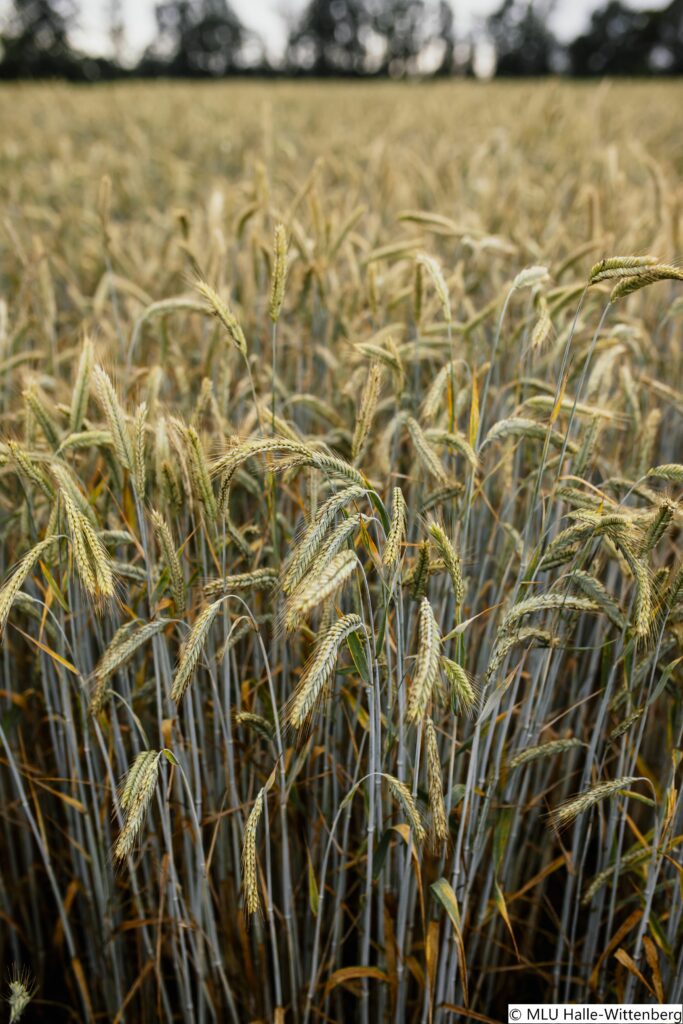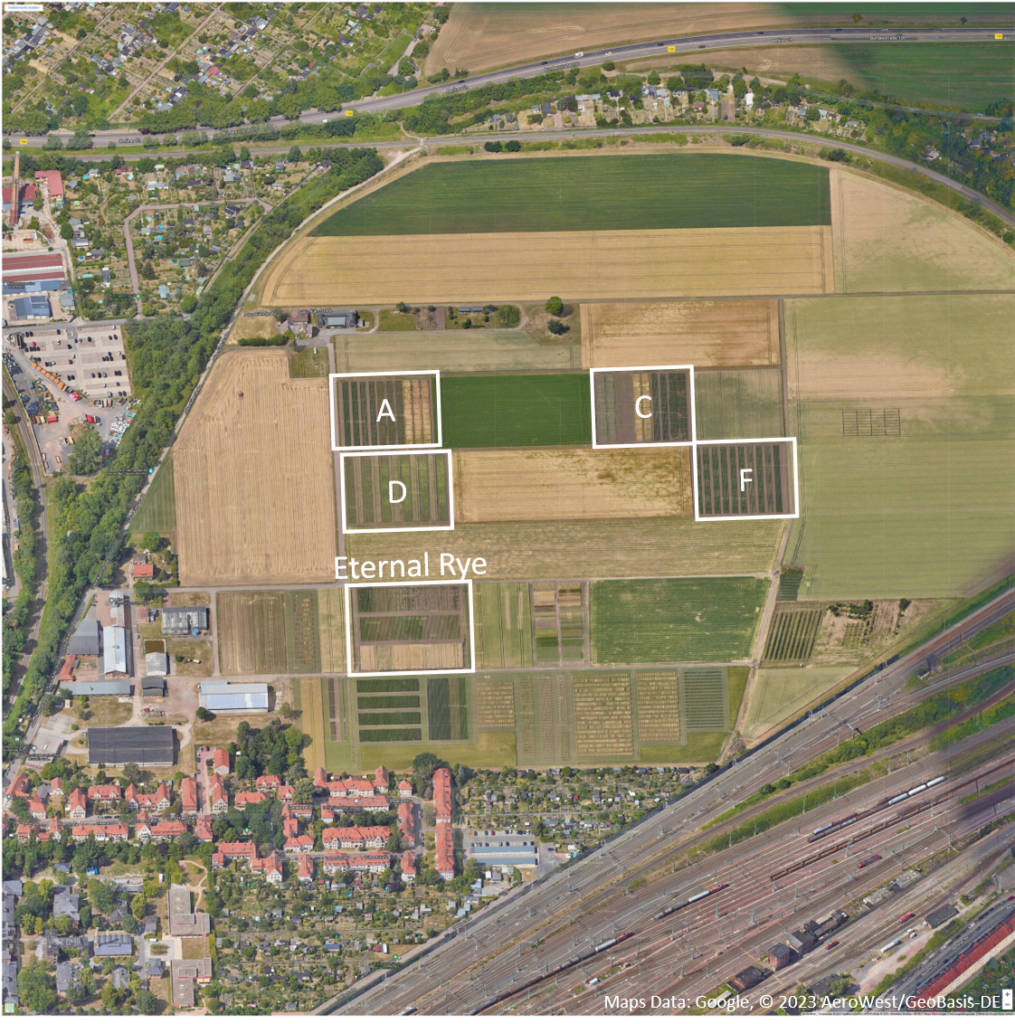The teaching and experimental station of the Martin-Luther-University Halle-Wittenberg is named after its founder Julius Kühn, who established first trials in 1866. The first long-term experiment on this site was started in 1878.
Five of the once seven long-term fertilization experiments are still being carried out on the experimental station today. An overview of all trials can be found here (pdf, partly in German).
The Kühnfeld (German for Kühn-„Field“) measures ca. 37 ha and is located at the eastern edge of the city of Halle in Saxony-Anhalt, Germany (51° 28′ 58.44“ N, 11° 58′ 9.48“ E).
The site is located 113 m above sea level, at the edge of a chernozem region with soil classified as Haplic Phaeozem. The A-horizon is about 60 cm thick. The sandy loess cover has particle fractions of 48-75 % sand, 16-37 % silt, and 7-15 % clay.
The mean annual temperature on the site is ca. 9.7 °C (average 1981-2010). The average annual precipitation in the same period sums up to 490 mm. During the vegetation period from April to July, the precipitation sum is at 48 mm.


Beside the Eternal Rye a complex of six fertilization trials was established by Karl Schmalfuß in 1949. Four of these trials are continued until today:
- Field A: Experiment on liming
- Field C: Experiment on K fertilization
- Field D: Experiment on P fertilization
- Field F: Experiment on organic and mineral fertilization
Teaching and experimental station Halle
Technical management: Dipl.-Ing. Bernd Look
Julius-Kühn-Straße 23
06112 Halle (Saale)
Postal address
Martin Luther University Halle-Wittenberg
Naturwissenschaftliche Fakultät III
Institut für Agrar- und Ernährungswissenschaften
LVS Halle
06099 Halle (Saale)
